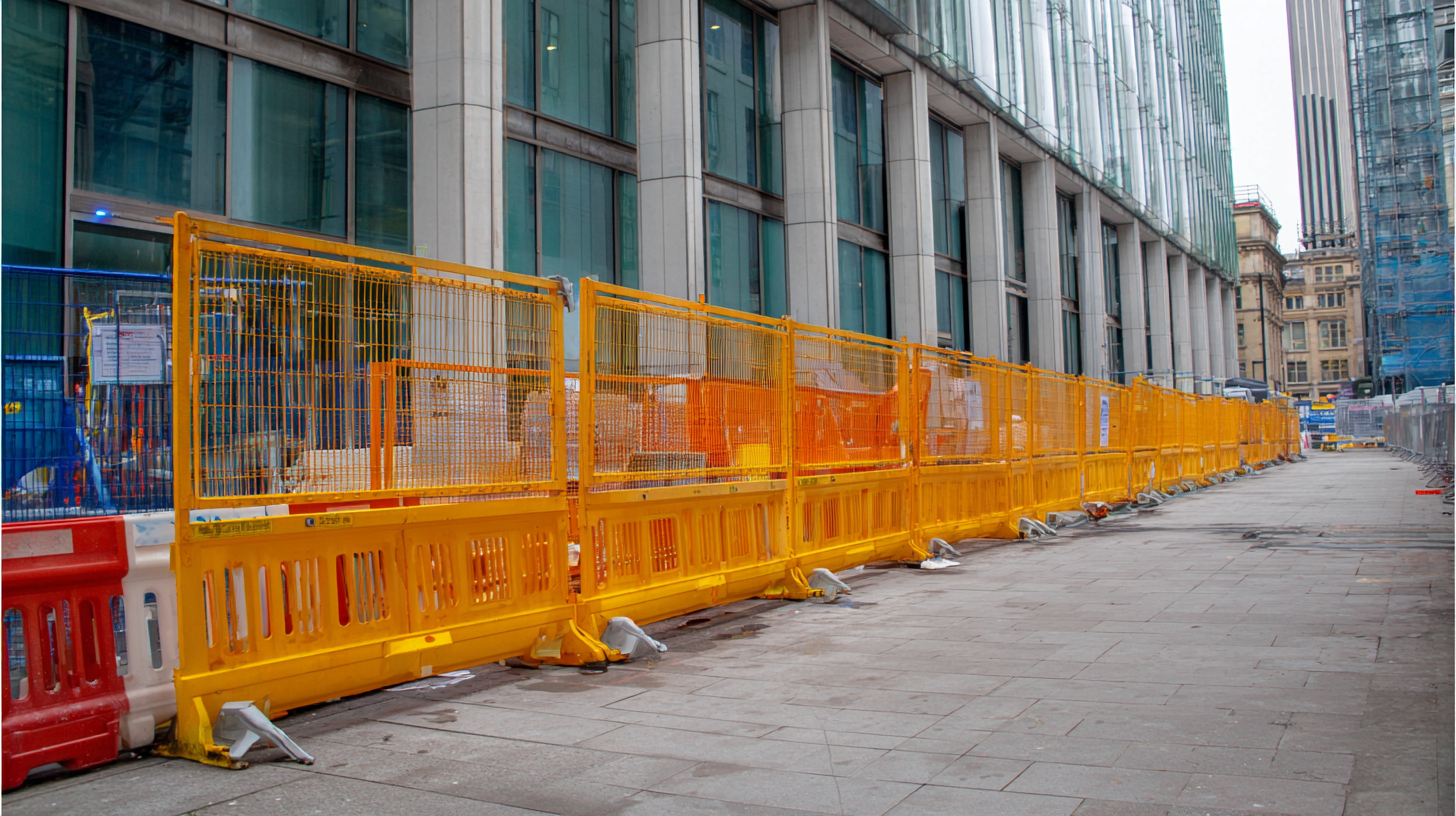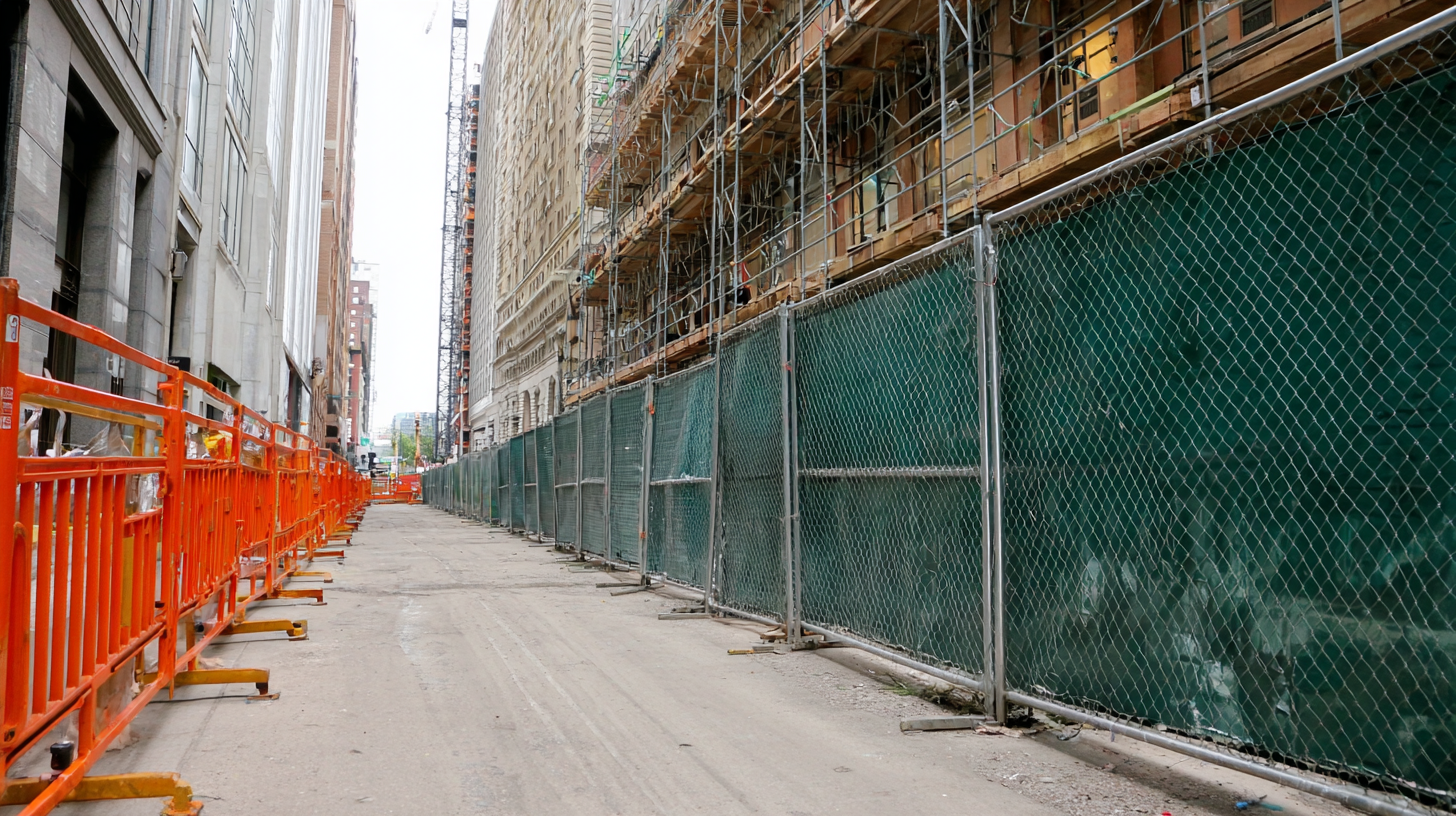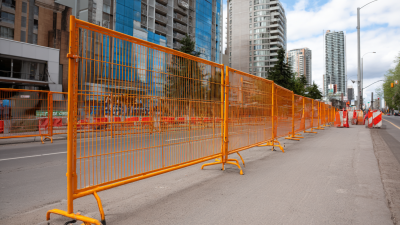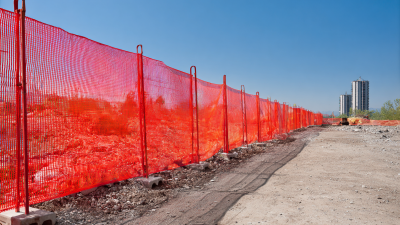Leave Your Message
-
Telephone
-
WeChat/ WhatsApp
-
Email
In the realm of construction safety, the implementation of a Temporary Safety Fence has become increasingly crucial. According to a report by the Occupational Safety and Health Administration (OSHA), nearly 6,000 fatal workplace injuries occur in the construction industry each year, highlighting the pressing need for improved safety measures. Temporary safety fences serve not only as a physical barrier protecting personnel and bystanders from hazardous environments, but they also play a significant role in deterring unauthorized access to construction sites. A study conducted by the National Institute for Occupational Safety and Health (NIOSH) indicates that proper site security can reduce accidents by up to 30%. As construction projects become more complex and urban environments more congested, the integration of adequate temporary safety measures becomes vital in promoting safety and compliance, ensuring that both workers and the public are safeguarded from potential risks.

Temporary safety fences play a crucial role in enhancing the safety of construction sites, significantly reducing the number of injuries. By creating a secure barrier, these fences prevent unauthorized access, keeping both workers and the general public safe from potential hazards. The presence of these fences can decrease construction site injuries by up to 30%, highlighting their importance in accident prevention strategies. With a clear delineation of the construction zone, they help maintain order and ensure that safety protocols are followed.
Moreover, temporary safety fences act as a visual warning, raising awareness about the dangers present on-site. When individuals see these barriers, they are more likely to recognize the risks associated with construction areas and exercise caution. This increased awareness contributes to a safer environment for everyone, reinforcing the need for these essential safety measures in the construction industry. Implementing temporary safety fences not only protects lives but also helps companies avoid costly liabilities associated with accidents.
| Reason | Description | Impact on Safety (%) |
|---|---|---|
| 1. Hazard Prevention | Temporary safety fences help prevent unauthorized access to hazardous areas. | 20% |
| 2. Fall Protection | They guard open excavations and prevent falls from heights. | 25% |
| 3. Site Organization | Fences help define work zones, improving organization and efficiency. | 15% |
| 4. Liability Reduction | Using safety fences reduces the likelihood of accidents, minimizing legal liabilities. | 30% |
| 5. Enhanced Visibility | They provide a clear visual barrier that can alert nearby pedestrians to the presence of a construction site. | 10% |
Temporary safety fences play a crucial role in enhancing security at construction sites, particularly in preventing theft. According to a report by the National Association of Home Builders, construction sites are often targeted by thieves, with an estimated 90% of contractors experiencing theft at some point. This statistic underscores the importance of implementing effective security measures to protect valuable materials and equipment.
Utilizing temporary fencing solutions can significantly reduce the potential for theft. A study by the Security Industry Association revealed that sites with perimeter fencing experience a 50% decrease in theft-related incidents. By creating a physical barrier, these fences deter unauthorized access and signal to potential thieves that the area is monitored. Moreover, integrating surveillance cameras along with temporary fencing can further enhance security measures, as reported by the Construction Industry Institute, where theft incidents were notably lower in sites equipped with both fencing and surveillance systems.
In addition to safeguarding assets, temporary safety fences contribute to overall site safety by controlling access. With the rise in construction theft, the importance of investing in reliable fencing solutions has never been more evident. The combination of effective fencing and surveillance not only protects valuable materials but also promotes a safer working environment for employees, emphasizing the necessity of temporary safety fences on construction sites.

Temporary safety fences are crucial for construction sites primarily due to their role in ensuring regulatory compliance, especially with OSHA standards. These regulations are designed to protect workers by mandating specific safety measures, such as fall prevention, which can be effectively supported by the installation of safety fences. By adhering to OSHA’s guidelines on planning, providing, and training workers, construction sites can mitigate hazards and prevent accidents, thereby avoiding costly fines and project delays.
Furthermore, non-compliance with safety regulations can lead to severe repercussions, including legal penalties, increased insurance costs, and damage to a company's reputation. In the context of the latest OSHA updates, which emphasize proactive safety measures, the importance of maintaining robust documentation and communication becomes evident. Temporary safety fences serve as a visible commitment to workers’ safety and compliance, thereby fostering a safer working environment that prioritizes both legal adherence and employee well-being.

Temporary safety fences are not just a formality; they are a crucial component of construction site management. One of the most compelling reasons to invest in these fences is their cost-effectiveness, particularly in relation to site liability insurance premiums. By implementing temporary safety fences, construction companies can save up to 40% on their insurance costs. This significant reduction is largely due to the enhanced safety measures that these fences provide, which minimize the risk of accidents and liabilities, ultimately making insurance providers more willing to lower premiums.
When considering the installation of temporary safety fences, companies should keep a few tips in mind. First, ensure that the fencing meets local safety regulations to avoid fines and legal issues. Additionally, choose durable materials that can withstand harsh weather conditions and potential impact from construction activities, which prolongs the lifespan of the fence. Regular inspections are also key; checking for any wear or damage can prevent potential breaches in safety.
Moreover, effective communication about the purpose of safety fences with your workforce can foster a culture of safety on site. Encourage team members to report any issues with the fencing immediately. By prioritizing safety through these measures, the project not only becomes more secure but also maintains budget efficiency, ultimately benefiting all stakeholders involved.
Temporary safety fences play a pivotal role in enhancing the safety and efficiency of construction sites, particularly due to their flexibility and adaptability. These fencing solutions can be tailored to meet the specific needs of diverse projects, whether they are large-scale developments or smaller renovations. According to a market analysis report, the global construction safety equipment market is projected to reach significant growth by 2025, driven by the increasing emphasis on workplace safety and regulatory compliance. Temporary safety fences not only delineate hazardous areas but also facilitate customization for unique site requirements, ensuring that each project can maintain its productivity while prioritizing safety.
The adaptability of temporary fencing solutions is also reflected in their ability to integrate with varying site layouts and configurations. This customization is crucial as construction sites often present unique challenges, requiring fences that can be quickly assembled or reconfigured to respond to changing conditions. A recent report highlighted that nearly 70% of construction companies view flexible safety solutions as essential in managing risk effectively and maximizing project timelines. As such, construction firms that invest in versatile fencing options can achieve enhanced safety compliance while reducing delays and maintaining high standards throughout the project lifecycle.








